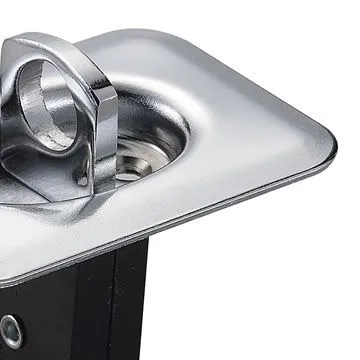Nov . 18, 2024 07:50 Back to list
Gypsum Board Access Panels for Easy Maintenance and Installation Solutions
Understanding Gypsum Board Access Panels
Gypsum board access panels are essential components in modern construction, specifically in interior wall systems. These panels provide convenient access to various building systems hidden behind walls, such as electrical wiring, plumbing, or HVAC components, while maintaining a smooth and aesthetically pleasing wall surface. In this article, we will explore the features, benefits, and installation of gypsum board access panels.
To begin, gypsum board, commonly known as drywall, is a popular building material made from gypsum plaster sandwiched between two sheets of thick paper. Its lightweight nature, fire resistance, and ease of installation make it a preferred choice for wall construction. Gypsum board access panels are designed to integrate seamlessly with this material, allowing easy access without compromising the wall’s integrity.
One of the primary advantages of using gypsum board access panels is their ability to conceal mechanical systems while providing easy maintenance access. In commercial and residential buildings, various systems, such as ducts, pipes, and electrical conduits, need to be accessible for routine inspections and repairs. Access panels allow technicians to reach these systems without the need to dismantle entire walls, thus saving time and reducing labor costs.
gypsum board access panels

Moreover, gypsum board access panels are available in a variety of sizes, styles, and finishes. This adaptability makes them suitable for various applications, from small utility access points to larger panels for substantial equipment access. Contractors can choose from flush or surface-mounted designs, depending on the specific needs of the project and the desired aesthetic outcome. Furthermore, some access panels are designed to be painted or finished like the surrounding wall, ensuring they blend in seamlessly and do not disrupt the visual appeal of the space.
Installation of gypsum board access panels is generally straightforward. It typically involves cutting an opening in the gypsum board at the desired location and securely placing the access panel into the frame. The installation process can be completed quickly, making it a practical choice in both new constructions and renovation projects. Proper installation is crucial, as it ensures that the panel functions effectively over time and maintains the wall’s structural integrity.
In addition to their functional benefits, gypsum board access panels can also enhance safety and compliance within a building. Regulations often require access to certain mechanical systems for safety inspections and maintenance. By integrating access panels into the design, builders can ensure compliance with safety codes while providing a proactive approach to facility management.
In conclusion, gypsum board access panels are a vital addition to modern construction practices. They facilitate access to essential systems while preserving the aesthetics and structural integrity of walls. Their versatility, ease of installation, and compliance with safety standards make them an indispensable component for contractors, architects, and builders alike. Whether in residential or commercial applications, understanding and utilizing gypsum board access panels can lead to more efficient building management and maintenance, ultimately contributing to the longevity and functionality of the infrastructure.
-
Quality Ceiling Trap Doors & Access Panels | Easy & Secure AccessNewsAug.30,2025
-
Durable Ceiling T Grid Systems | Easy InstallationNewsAug.29,2025
-
PVC Gypsum Ceiling: Durable, Laminated Tiles for Modern SpacesNewsAug.28,2025
-
Pvc Gypsum Ceiling Is DurableNewsAug.21,2025
-
Mineral Fiber Board Is DurableNewsAug.21,2025
-
Ceiling Tile Clip Reusable DesignNewsAug.21,2025







